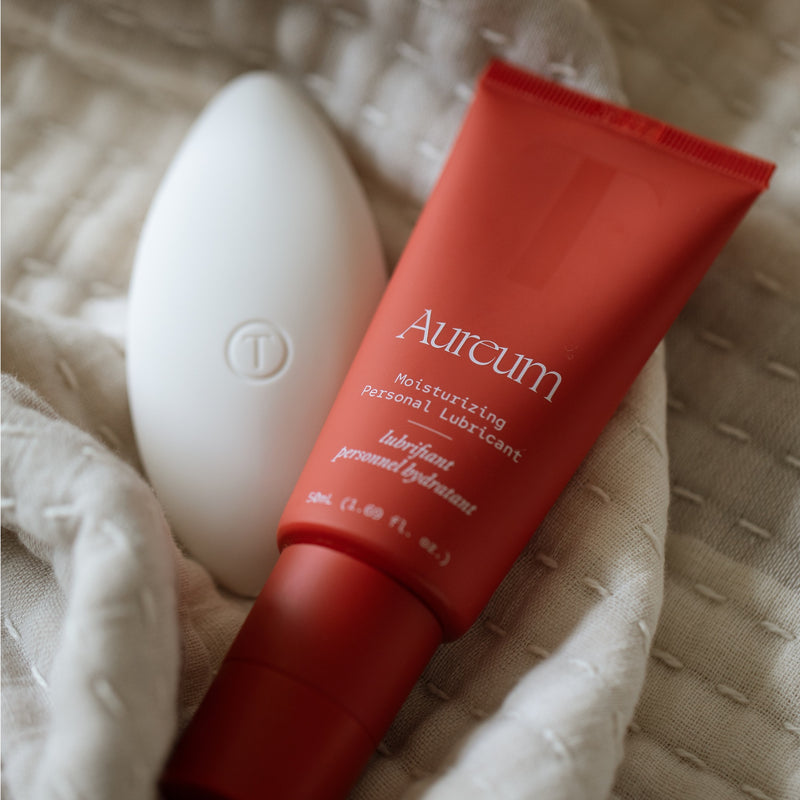The Opposite of Kegels
MEDICALLY REVIEWED BY JULIE BOTTARINI, MPT / CLT
There’s a popular pelvic floor exercise known as the Kegel. You’ve probably heard of them, maybe you’ve even done them! They can be incredibly beneficial when done correctly, but they’re not for everyone.
While a weak pelvic floor is often caused by low muscle tone - and Kegels are an excellent treatment option for that specific issue - pelvic floor weakness and dysfunction is often caused by overly tight, toned, tense muscles.
Why is my pelvic floor so tight?
An overly tight pelvic floor is known as a hypertonic pelvic floor. It happens when the muscles of the pelvic floor become too tense and can no longer properly relax.
Yes, your pelvic floor can become hypertonic from doing too many Kegels. But it can also happen as a result of a variety of other factors.
- Working out the core muscles. When a person works out frequently and engages the core muscles on a regular basis, it can cause the muscles to stay continuously engaged.
- “Holding it.” Holding your urine and defecation is done by tightening the pelvic floor muscles. Over time, holding it on a regular basis can result in a non-relaxing pelvic floor.
- High stress levels. Stress, fear or anxiety can cause muscles all over the body to reflexively tighten (ever gotten knots in your back after a busy week at work?), and the pelvic floor muscles are no exception. Extended periods of stress and anxiety can result in an overly tight pelvic floor.
- Pelvic and abdominal health conditions. EndometriosIs, irritable bowel syndrome, interstitial cystitis, pudendal neuralgia, and vulvodynia are all different types of conditions that cause pain and inflammation in the pelvic and/or abdominal region. The chronic pain caused by those conditions, among others, can result in the development of tense pelvic floor muscles.
- Birth trauma and scar tissue. Women who experience perineal tearing or vaginal tearing may be at a higher risk, as the pain and scarring can cause the pelvic floor muscles to tighten protectively. One-sided pelvic floor tears can cause the opposite side of the pelvic floor to tighten due to overactivity.
Identifying a hypertonic pelvic floor
Usually when a person has a hypertonic pelvic floor, they’ll have pelvic muscle pain. A few more signs include:
- Painful sex
- Vaginismus
- Urinary incontinence
- Difficulty emptying the bladder
- Slow urine flow
- Urine hesitancy or delayed start
- Urinary urgency
- Urinary frequency
- Painful urination.
- Constipation
- Difficulty emptying the bowels
- Straining to empty the bowels
- Pelvic pain
- Low back pain
- Hip pain
- Coccyx pain
If you’re experiencing some of these symptoms, it’s important to consult with a pelvic floor physical therapist. They can help you figure out why you’re going through what you’re going through, and teach you how to manage it.
What can I do now?
If Kegels help strengthen a pelvic floor with muscles that are lacking in tone, what’s the opposite of Kegels?
Pelvic floor relaxation. Stretching and relaxing tense muscles is absolutely essential for maintaining their health and effectiveness.
Although a pelvic floor physical therapist can offer the best guidance on how to relax the pelvic floor (and we recommend consulting a pelvic floor physical therapist before performing pelvic floor exercises), we wouldn’t leave you without an option for one simple relaxation exercise you can try at home.
Try a diaphragmatic breathing exercise to relax your pelvic floor:
- Step one: Put a hand on your chest and another hand on your stomach, just below your rib cage.
- Step 2: Counting to three, take a deep breath. When you inhale, your pelvic floor relaxes.
- Step 3: Exhale to the count of four. As you exhale, your pelvic floor returns to its resting state.
- Step 4: Practice this breathing for 5-10 minutes.
-
Step 5: Repeat daily.
(if you can feel the hand on your stomach rise and fall, you’re using your diaphragm correctly)
When you consult with a pelvic floor physical therapist, they will likely create a treatment plan for you that includes everything from relaxation and breathing exercises to advice on bladder and bowel habits. There’s no “one size fits all” solution for sexual wellness - it’s worth it to identify your symptoms, get a proper diagnosis, and make steps towards healing. You don’t have to live with pain or discomfort, and we just want every woman to know that there are options out there for treatment, no matter your age or symptoms.
Resources:
https://www.nafc.org/bhealth-blog/how-to-relax-your-pelvic-floor
https://nymag.com/strategist/article/best-kegel-exercisers.html








